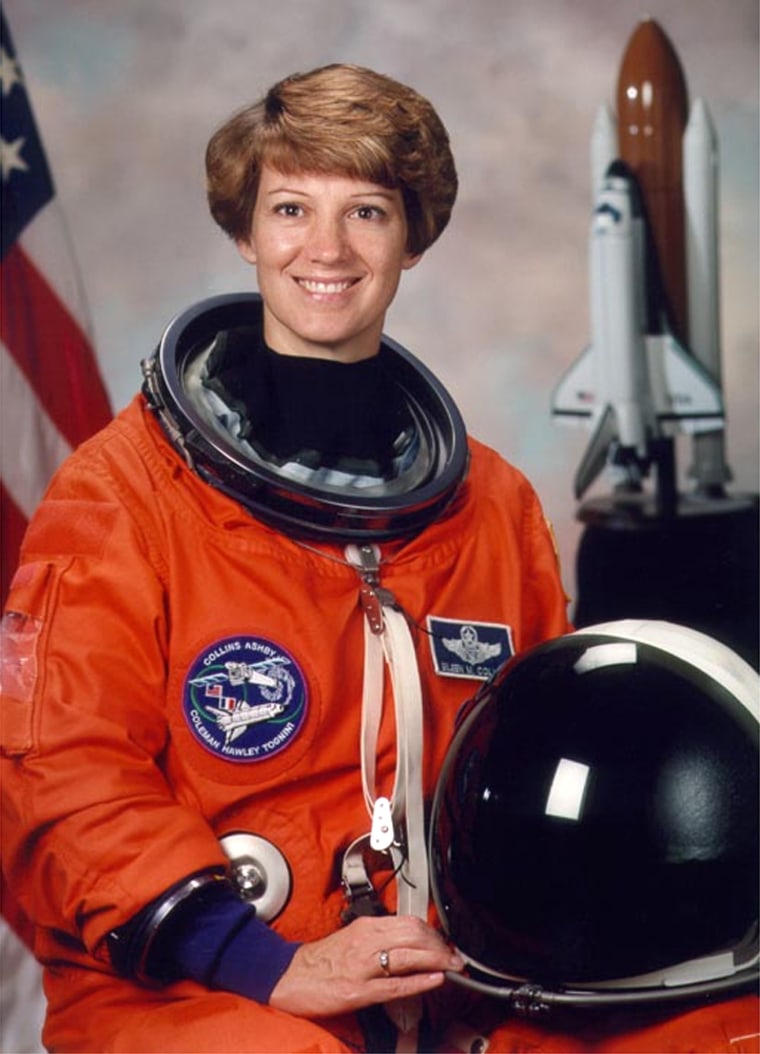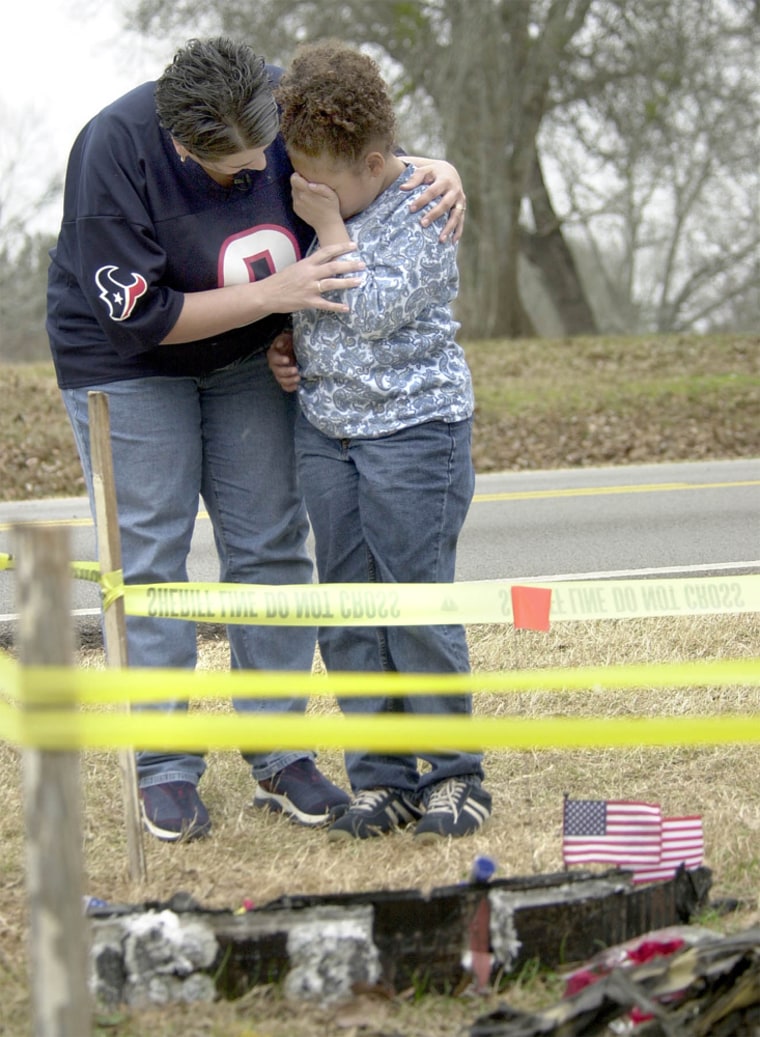One year ago this coming Sunday, my wife Connie and I were enjoying our morning coffee and reading the newspaper at our home in Dallas when we heard a loud explosion that rattled the windows of our house.
It was shortly after 8 o'clock in the morning. It felt like a building had exploded in the neighborhood. Connie ran to the front door and looked outside for any signs of destruction.
At the same time David Bloom interrupted NBC's "Weekend Today" to say mission control at NASA had lost radio contact with the Space Shuttle Columbia on its re-entry through the earth's atmosphere.
I immediately telephoned the NBC News Desk in New Jersey to tell them what we had heard. Within minutes we knew the worst had happened: the Shuttle Columbia had broken apart on re-entry over Texas and the entire crew of seven perished in the disaster.
Agony over mistakes
A year has passed and the people who work at the Johnson Space Center in Houston have been agonizing over what went wrong.
They know a suitcase-size section of foam insulation broke off a fuel tank and slammed into the leading edge of the shuttle's left wing at more than 500 miles per hour during the launch, causing damage to the doomed flight.
But many people at NASA have been asking each other, and themselves, why somebody didn't report the damage or sound the alarm. Perhaps there could have been some way to save the crew.
Nobody is taking more blame than Wayne Hale, the deputy program manager for the space shuttle program.
In an extraordinary memo addressed to the "space shuttle team" Hale wrote this week, "I cannot speak for others but let me set my record straight: I am at fault. If you need a scapegoat, start with me. I had the opportunity and the information and I failed to make use of it."
I interviewed Hale two days before he wrote his memo. He stunned me when talking about the astronauts who were killed: "To think that what, perhaps, I did contributed to their death, or precisely what I didn't do, is something that's going to be with me for a long time and I know that there are a lot of people here who feel the same way."
Future of the Shuttle program?
Air Force Colonel Eileen Collins recalled Feb. 1, 2003. "I remember waking up my 2-year-old son and bringing him downstairs," she said. “We have NASA-TV at our home and we waited for the shuttle to land. I knew something wasn't right."

Collins said she "jumped into her work mode" trying to get somebody to come over and watch her son so she could go to work. She realizes now she probably reacted that way because she was in a state of shock.
Collins had good reason to be in shock. She's scheduled to be the commander of the next shuttle mission and she knows that could be scary for her children, a 3-year old boy and his 8-year-old sister.
Collins says she plans to show her children videos of missions she has flown in the past to reassure them it can be safe. "I want them to see the fun side, and the important side of going into space," she said. "On the other hand, I want my kids to know if they are scared on launch days, that's normal."
What about her? Will it be frightening to be on the first shuttle to fly after the Columbia accident?
"When we fly, whenever that happens to be, I am going to feel very safe and certainly have the option of saying, ‘I don't feel safe, I'm not going to go.’"
There is a park just inside the main gate at the Johnson Space Center in Houston where they plant a tree for each of the astronauts who has died over the years of the space program.
Last year, seven trees were added to remember the astronauts who perished on-board the Columbia. It's a reminder that NASA employees see every day they come to work.
